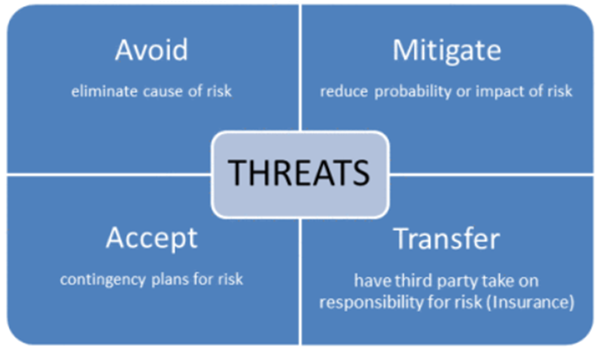3/27/2020
BY: ROGER TOMLINSON
 Unplanned events can have devastating effects on small businesses. Crises such as fires, damage to stock, illness of key staff members or IT system failures all make it difficult or even impossible to carry out day-to-day activities. Many manufacturers across the globe are now learning this lesson as they scramble to react to the Covid-19 pandemic, with countless facilities forced to limit operations or even shutdown altogether.
Unplanned events can have devastating effects on small businesses. Crises such as fires, damage to stock, illness of key staff members or IT system failures all make it difficult or even impossible to carry out day-to-day activities. Many manufacturers across the globe are now learning this lesson as they scramble to react to the Covid-19 pandemic, with countless facilities forced to limit operations or even shutdown altogether.
In some drastic cases, unplanned catastrophes like this can lead to the loss of important customers or, at worst, going out of business completely. To avoid this fate and minimize the potential impacts of a disaster, or prevent it from happening in the first place, planning is essential.
PLAN FOR ANY BUSINESS CRISIS IN FIVE STEPS
Small businesses often lack the resources needed to easily cope in a crisis. Therefore, planning ahead of time is the best method to ensure your company can survive any situation. To plan how your company will react if any disaster occurs, develop a Business Crisis Risk Management Plan. To accomplish this, companies must:
- Identify potential crises that might affect the company. There are dozens of categories of business risks, including outbreak of disease (like Covid-19), natural disaster, theft or vandalism, terrorist attack, crisis affecting suppliers or crisis affecting the business’ reputation. Companies must take each of these potential risks into account and determine which are most likely to have an impact on the business.
- Prioritize risks. To determine the level of risk for each category, you must find the Value-at-Risk. This involves analyzing the probability of the event occurring, the potential impact, severity of the impact and detectability. Each factor is rated on a scale of one to 10, with 10 being the most severe, to determine which risks need to be prioritized.
- Determine the risk response strategy. After identifying the key risks faced by your company, the next step is to protect your business against them. The goal here is to minimize the potential impact of the crisis or prevent it from happening at all. There are four main response strategies, as shown in the figure below:

Potential strategies might include installing an anti-virus software to avoid or mitigate the impact of cyber-attacks, investing in insurance to transfer potential risks, or accepting certain crises will occur that render your facilities unusable and agreeing to share facilities with local businesses temporarily. In each of these cases, the company must create a process map in writing for the Business Crisis Risk Management Plan to establish each step of the response plan.
- Establish how to implement the risk response strategy. This should detail:
- Key business functions that need to get operating as quickly as possible, along with the resources needed to accomplish this
- All roles and responsibilities of individuals involved in the emergency
- Any training team members will need to complete to enable them to fulfill their responsibilities
- Communication to all employees about what they must do, complete with a checklist and timeline
- Review and test the plan regularly. Once the plan is in place, you will need to monitor and test how likely it is to perform well in the event of an emergency. This can be accomplished by using a Failure Mode Effects Analysis (FMEA) tool to assess the plan against several possible scenarios. This will help discover potential failures or risks that exist within the process. During this review, check to make sure each employee’s role is clearly defined, the order of the plan is optimized and emergency numbers and contacts are up-to-date.
A carefully thought-out business crisis plan will make coping in a crisis easier and effectively minimize disruption to both the business and customers. It also proves to customers, insurers and investors that your business is robust enough to cope with anything that might be thrown at it, potentially giving your company the edge over competitors. Most importantly, it will keep your business on track for success even when unforeseen conditions occur.
Learn more about how The Center can help your business prepare at www.the-center.org.
MEET OUR EXPERT
 Roger Tomlinson, Lean Program Manager
Roger Tomlinson, Lean Program Manager
Roger has been a Program Manager at The Center for 18 years. He has trained and mentored hundreds of Michigan manufacturers in the entire portfolio of Lean strategies and methods (e.g., Kaizen events, Standardized Work, 5S/Workplace Organization, Value Stream Mapping, Total Productive Maintenance, Culture Change, Team Building, Operations Management and Process Re-Engineering). In addition to his training and consulting work, Roger has more than 20 years of experience in manufacturing management.
Since 1991, the Michigan Manufacturing Technology Center has assisted Michigan’s small and medium-sized businesses to successfully compete and grow. Through personalized services designed to meet the needs of clients, we develop more effective business leaders, drive product and process innovation, promote company-wide operational excellence and foster creative strategies for business growth and greater profitability. Find us at www.the-center.org.
Categories: Manufacturing,
Other